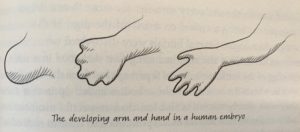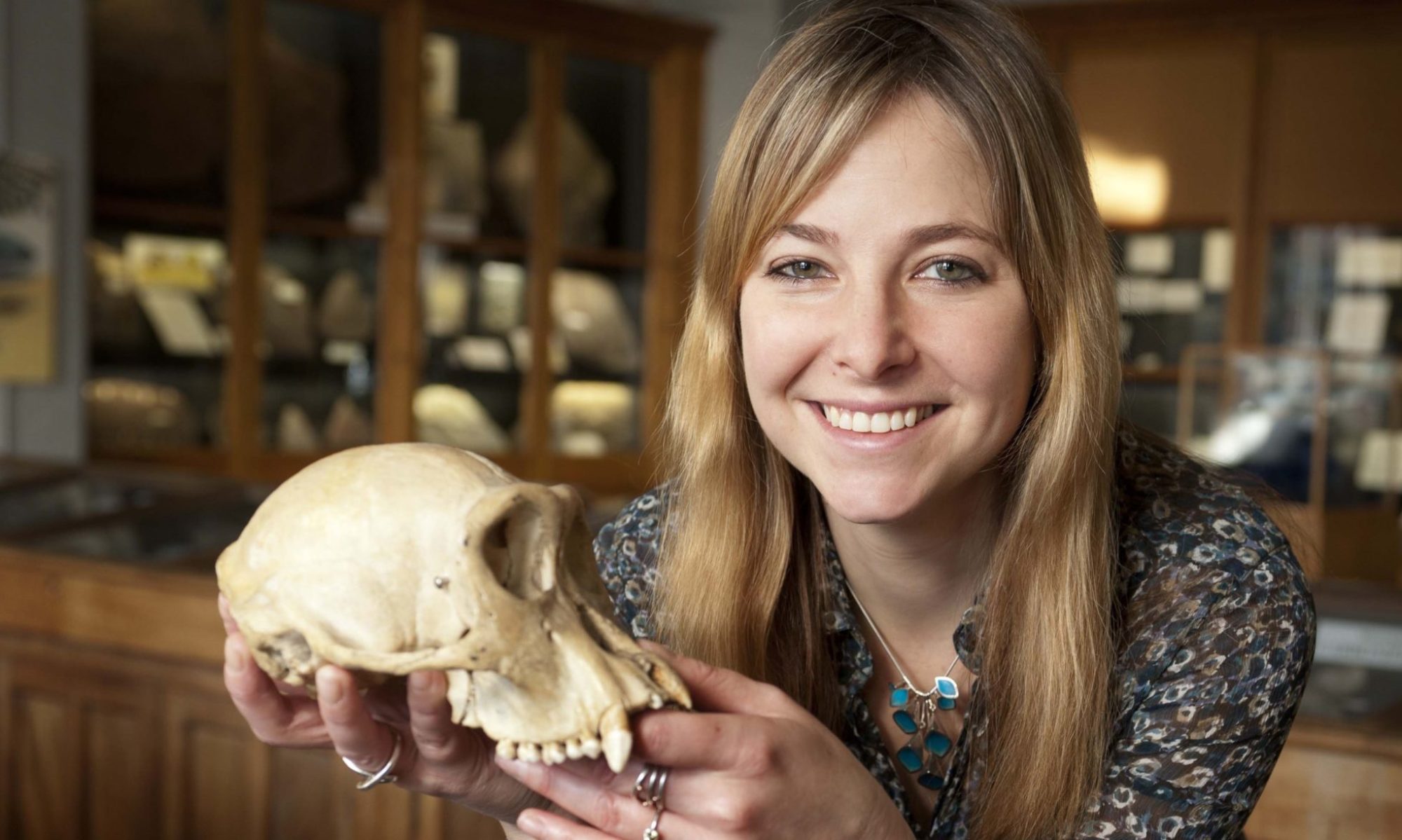Chapter Overview:
In this chapter, Roberts discusses the emergence of limbs in human embryos as well as how they probably evolved as fish emerged from the water.
Chapter Summary:
Roberts begins her discussion of limbs by describing their embryonic origins. Starting as limb buds early in development, they will develop into our arms and legs. By week seven, fingers and toes begin to form.

By week six limbs contain cartilage models of bones which will form as the fetus develops. Bones continue to ossify during growth. Growth plates in different bones fuse at different developmental stages in life. For osteoarcheologists, this gives tools to make a good guess at age when looking at the remains of a juvenile.
Muscles migrate to their attachment points during embryonic development. Somites originating from near the vertebrae attach and fuse together to make the muscles adults have. Patterns of innervation show the migration patterns of muscles from the spinal cord.
Fins and limbs share an evolutionary history. There are many similarities between arms, fins and wings of animals. Homologous structures show this shared past. Roberts discusses the controversial anatomist Richard Owen and his own description of these similar structures, though he was a firm believer in the scala naturae, these observations were useful in seeing patterns in our history and call back to the Hox genes that we rely on for body planning. One mutation could have caused the addition of fingers or toes in our ancestors, a much more credible transition than developing an entire new extremity from scratch.
Next, Roberts discusses the emergence of limbs in a fishlike ancestor, the Acanthostega which shared many characteristics with tetrapods as well as fish. This creature, however, showed a strange number of fingers, eight on each forelimb and probably as many on its hind legs. Contrary to logic though, it seems these limbs were not useful for bearing weight. It is thought that these creatures waded in shallow waters and were able to propel themselves out of the water briefly to capture prey then they waded back into the water where they spent most of their time. Another fossil, Tiktaalik, which similarly was a transitionary animal between fish and land animals, shows evidence that pelvic fins, which were traditionally thought to be weaker than pectoral fins (which would become the forelimbs of modern tetrapods), had begun to become stronger, as reflected with the comparative robustness of the pelvic bones of the Tiktaalik. This strength shows that perhaps hind fins in transitionary animals were already making the shift to hindlimb driven locomotion which is what we see in the stronger hind limbs of most tetrapods now.
